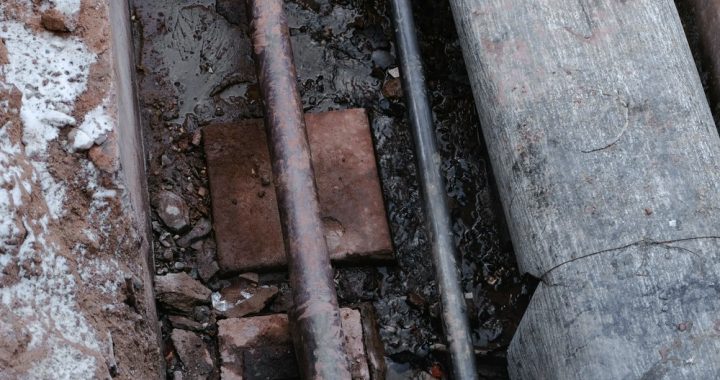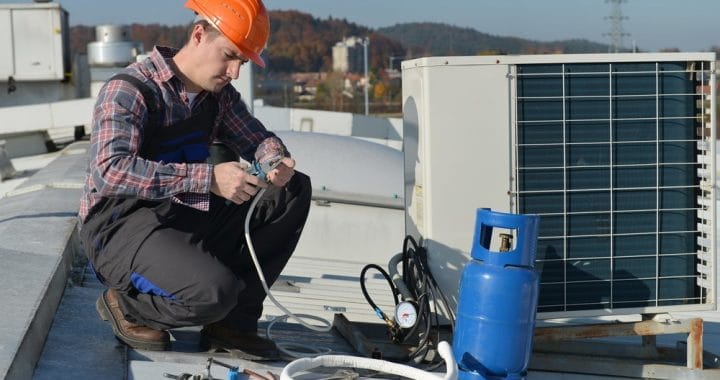How to Repair and Troubleshoot an Electric Water Heater

If you’ve ever been the last one to shower in a houseful of strangers, you know just what you’re in for bone-chilling, teeth-chattering icy cold spray. However, if you’re having water trouble without a houseful of people, it’s time to take a look at your electric water heater. Water temperature complications, leakage, discoloration, odor, and noise are signs of a concern with an electric water heater. Electric water heaters resemble their gas-fueled counterparts in appearance. They both use a steel storage tank jacket with insulation between the storage tank and the tank jacket to prevent hot water from escaping.
The heat source is the primary distinction between electric and gas water heaters. Electric upper and lower heating elements that reach into the water tank heat the water in an electric water heater. A gas burner heats the water from below the tank of a gas water heater. For more information look at here. A failed heating unit, an inexpensive component that is relatively easy to repair, is typically the cause of problems with little or no heat. Other issues can arise due to incorrect settings, excessive home water pressure, or a lack of tank maintenance. To solve such an issue you can call experts plumbers who specialize in water heater replacement and repair. Find here if you want water heater repair service in Los Angeles. Give us a call, our team arrives on time and diagnoses your problem and also explains the best way to fix it.
A newly mounted electric water heater can take several hours to achieve average operating temperature. If you don’t have hot water after two hours (the water isn’t even warm), check and see if the water heater is receiving electricity. New water heaters often fail due to a lack of fuel.
Examining Electrical Power
A basic “circuit tester” or “Water Heater Repair” will check for electricity, but a meter that tests voltage is needed for a more thorough diagnosis of electrical issues. Turn off the circuit breaker labeled “water heater” to search for strength. Remove the upper access panel from the water heater. Remove the insulation and plastic cover with care. Determine the location of the power supply cable. This is usually connected to the upper thermostat’s top two screws. Check for voltage on the top two screws of the upper thermostat by resetting the circuit breaker. The voltage that the water heater needs is indicated on the mark. The majority of residential units operate at 220/240 volts (although some operate 110/120 volts). Check that your water heater is receiving the proper voltage. There are likely problems with your home’s electrical system if it is not receiving the appropriate voltage. Your electrical issue can necessitate the services of a trained electrician. Remove the plastic mask, padding, and access panel until turning off the circuit breaker.
Safety first.
Before calling for support, go to this website and fill out the questionnaire to get three free estimates. For clean, easy, and fast troubleshooting and repair of any problem with your electric water heater, consult a certified professional. One of the most common reasons for an electric water heater not working is when the heating elements lose steam. Since there are various causes for this problem, it is critical to switch off the power to the device before beginning any work (circuit breaker or fuse). Often, double-check all the components are energized with a multimeter, just to be safe. Look here to know more on how to troubleshoot issues like water leakage or dripping, banging, sediment build-up, rotten egg smell, discoloured water, bulging, rust, high heat, and abrupt temperature rise, among others.
Causes of water heater not working
There are, of course, other reasons for a shortage of hot water. Check to see if the circuit breaker is on and not tripped until testing the components. Even, right above the upper thermostat, hit the reset button on the high-temperature cutoff. The issue can be resolved by resetting the circuit breaker or the high-temperature cutoff, but the fact that they were tripped in the first place may mean an electrical problem. Check the heating elements if they trip again. If the heating elements are in good working order, the thermostats or cutoff switch may be the source of the problem. Testing is difficult, so because they’re cheap ($20 for both the thermostat and the cutoff switch), you should only replace them.
Problems with water temperature
Water temperature issues can be caused by a variety of issues with electric water heaters. Symptoms vary from no hot water to insufficient hot water to overheated water. Shortage of electricity, a faulty electric thermostat, or a faulty upper electric heating system may all cause a lack of hot water. To begin, rule out any power issues. Replace any blown fuses and reset any tripped circuit breakers. Then, see whether the electric water heating element thermostat is receiving electricity. If the part is defective, test it and repair it. Finally, if the thermostat is collecting power but isn’t running, it should be replaced, as should the automatic water heater.
Leaks
A defective temperature and pressure (T&P) relief mechanism, undue pressure, overheating, a jammed valve, a leak from an overhead or adjacent plumbing link, loose heating element bolts, a bad gasket, or a leaked water tank are all possible causes of water leakage. Place a bucket under the overhead pipe to inspect the T&P valve, open it, and flush it free of debris; if it still leaks, fix or replace it.
There is some noise
A low, rumbling noise can signify boiling water, which is caused by sediment build-up overheating. This can be remedied by flushing the water heater. Scale buildup on electrical heating elements can create a high-pitched whining noise. Look for the Water Heater Repairfor assistance. First, flush the water heater to get rid of the problem. The water heater tank and elements can then be cleaned of size. Finally, for better heat-transfer performance, use low-watt-density heating elements with a wider surface area.
Discoloration or an odour,
Corrosion inside a glass-lined tank or a failing sacrificial anode rod may create rust-colored water. Replace the anode rod with a magnesium anode rod if it is failing. A rotten-egg-smelling sacrificial anode rod may also emit hydrogen when it decays. To fix this, start by flushing the water heater. Then, for two hours, soak the tank and tubing in a solution of 2 pints 3 percent hydrogen peroxide in 40 gallons of water. Replace the failed anode with a zinc-alloy anode if the odour occurs. If the odour persists, substitute the radiator with one that is coated with plastic.
Troubleshoot and its solutions
Be sure the electricity is on. Check to see if the device has a power supply. If not, the key switch may have turned off, the circuit breaker may have been tripped, or the fuse may have blown.
There’s a reset button. On the upper thermostat, press the red reset button. If you still don’t have hot water after 10 minutes, check if the unit is receiving power; check the heater’s pair of the circuit breaker on the breaker sheet.
Make sure the voltage is right. If the breakers are turned on, use the voltage tester and see if there is any voltage at the upper heating element’s input terminals. Depending on the model, the voltage can be 220/240 V or 110/120 V. If there is no voltage, the electrical grid in the home should be tested or the thermostat should be removed. If you have power but no hot water, the heating system might have burnt out and needs to be replaced.
The pace of recovery. Water consumption can surpass the tank capacity if there is a sudden disruption in hot water supply. Wait for the heater to rebound if this is the case. If this is a recurring issue, the water heater could be undersized, so consider upgrading or a tankless.
If the elements are too thin, substitute them with the correct one (as suggested by the manufacturer); flush the tank to prevent lime forming on the elements; and replace the dip tube if it is bent. If you are looking for water heater repair in San Diego, please visit our website to schedule an appointment and get the perfect solution for all your needs.
Continuous activity is needed. An undersized reservoir, small heating elements, a broken thermostat, or leaks in faucets, around heat traps, fittings, or heating elements are all possible causes. Leaking can be quickly repaired with the correct sealer, Teflon tape, and part tightening.
Author Bio:-
Aimee is a marketing manager at EZ Plumbing & Restoration. She loves to write about plumbing services, Water Damage Repair, slab leak repair, Hydro Jetting, and AC & Appliance Installation in San Diego.










